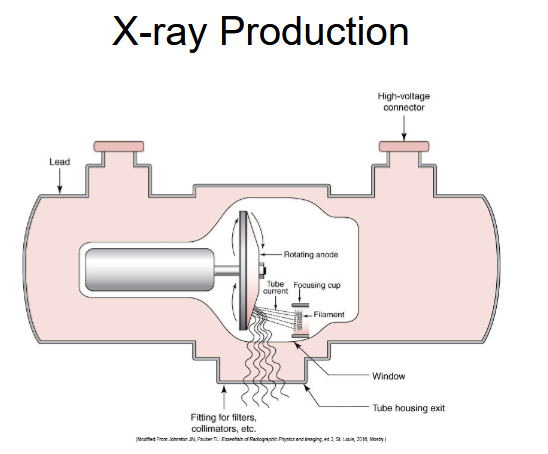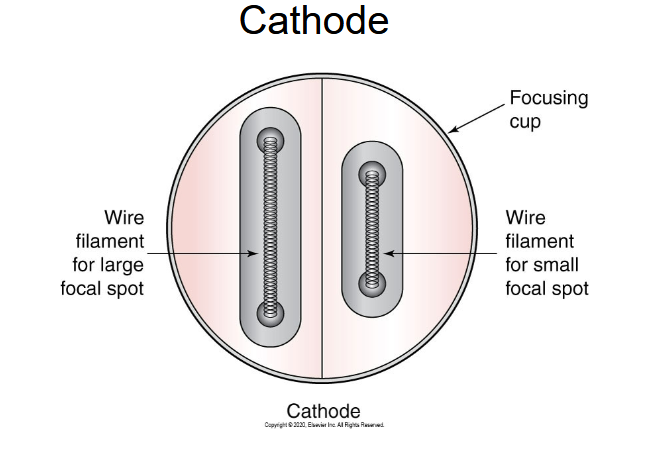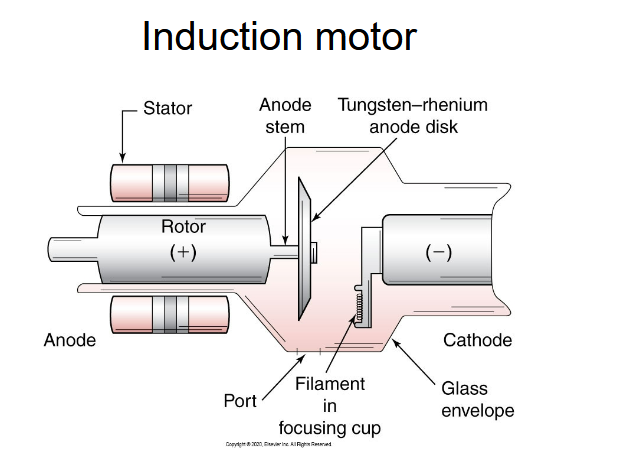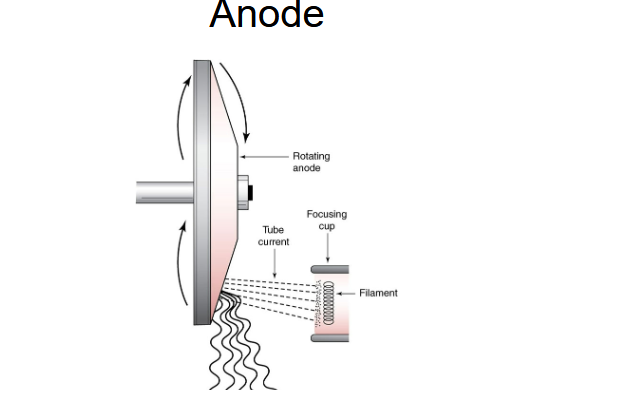X-ray tube target interaction pt 1 (xray tube part stuff)
0.0(0)
0.0(0)
Card Sorting
1/27
There's no tags or description
Looks like no tags are added yet.
Study Analytics
Name | Mastery | Learn | Test | Matching | Spaced |
|---|
No study sessions yet.
28 Terms
1
New cards

Learn all the things that are in the xray tube
2
New cards

Learn the structures of the anode
3
New cards

What are the structures in the induction motor
4
New cards

What are the structures in the anode
5
New cards
What is required for x-ray production?
A rapidly moving stream of electrons that are suddenly decelerated or stopped.
6
New cards
How are electrons produced in the x-ray tube?
The negative electrode (cathode) is heated and emits electrons through thermionic emission.
7
New cards
What happens after electrons are emitted from the cathode?
They are attracted to the positively charged anode, move rapidly toward it, and are suddenly decelerated or stopped.
8
New cards
What is the tube housing made of?
Lead surrounds the entire x-ray tube to contain leakage radiation.
9
New cards
What is inside the tube housing?
A vacuum-sealed envelope made of glass or metal (metal is preferred for durability and heat resistance).
10
New cards
What are the main components of the x-ray tube?
Cathode and Anode.
11
New cards
What does the cathode contain?
Filament(s) and focusing cup.
12
New cards
What is the filament made of?
A coiled tungsten wire that serves as the source of electrons.
13
New cards
What does "dual focus" mean?
The cathode has two filaments that create large and small focal spot sizes.
14
New cards
What is thermionic emission?
The process where the filament is heated by current, causing it to release electrons.
15
New cards
Can we focus x-rays?
No, we can only focus electrons before they strike the anode.
16
New cards
What is the space charge effect?
When a cloud of electrons near the filament repels additional electrons, limiting further emission.
17
New cards
What is the purpose of the focusing cup?
A negatively charged nickel cup that focuses the stream of electrons toward the anode target.
18
New cards
What is the function of the cathode?
To produce and direct electrons toward the anode.
19
New cards
Why is the anode rotating?
To dissipate heat efficiently and prevent damage to the target.
20
New cards
What materials make up the rotating anode?
Molybdenum, copper, tungsten, and graphite.
21
New cards
How fast does the anode rotate?
Between 3,000 and 10,000 revolutions per minute (rpm).
22
New cards
What components make the anode rotate?
A stator and rotor system (induction motor).
23
New cards
Why is tungsten used in the anode?
It has a high melting point and is efficient for x-ray production.
24
New cards
What is the purpose of the target?
To decelerate and stop electrons, converting their kinetic energy into heat and x-rays.
25
New cards
What percentage of electron energy becomes x-rays?
Only about 1% is converted into x-rays; the rest becomes heat.
26
New cards
What are the two types of x-ray interactions that occur at the target?
Bremsstrahlung and Characteristic interactions.
27
New cards
What is the composition of the anode target?
A tungsten-rhenium alloy embedded on a molybdenum base.
28
New cards
What percentage of the target material is tungsten?
Approximately 90%.